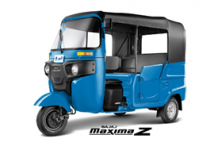Unless you’ve been living under a rock, there’s a massive recall concerning defective Takata airbags.
Supposed to save lives in the event of a devastating crash, these airbags could become potential grenades since their uncontrolled explosion could send shrapnel into the face of a vehicle’s occupants.
The US-based National Highway Traffic Safety Administration or NHTSA estimates that about 65-70 million airbags will need to be replaced, and that’s in the US alone. Everyone from Honda to BMW to Ferrari to McLaren is affected.
This safety recall isn’t just limited to the US either, it’s a global thing. And after a series of internal investigations, a number of carmakers have raised their hands and confirmed that some vehicles marketed and sold in the Philippines are affected.
Subaru is one of these brands and in a proactive measure, they have begun reaching out to their clients to inform them that their airbag needs replacing. Their exclusive Philippine distributor, Motor Image Pilipinas and their authorized dealerships have begun sending out SMS and direct mailers to affected owners telling them to have their airbag replaced.
Mr. Alvin Pisig, Motor Image Pilipinas’s National Head for Aftersales says that Subaru Corporation had initially informed them that only the 2005-2007 WRX and WRX STI models (aka “Hawk Eye”) were affected by the Takata airbag recall. Since then, Subaru Corporation expanded the scope to cover the 2009-2012 Forester (SH) and the 2009-2014 Legacy and Outback (BM and BR) as well. As of December 2017, only 22 percent of affected vehicles has had their airbags replaced.
In terms of the type of airbag covered by the recall, Mr. Pisig said that only the front passenger’s airbag is affected. Subaru Corporation has determined that all other airbags such as the driver’s airbag and side impact airbags are safe.
A few weeks ago, Motor Image Pilipinas’s Customer Service (CS) team sent me an SMS saying that my 2011 Subaru Forester XS is part of the recall. I immediately double-checked if they had the right unit. Since the SMS identifies the vehicle by its VIN Number, it can be verified in two ways.
First, see if the VIN Number matches the information on the LTO Certificate of Registration (CR). If the VIN identified matches the alphanumeric string in the Chassis Number space, your car is part of the recall. Second, check the VIN Number stamped on the vehicle, located by the driver’s door jam. If the alphanumeric code matches, you’re part of the recall.
At this point, remember to relax: the airbag won’t unexpectedly explode in your face.
The most prudent thing to do would be to call your nearest (or preferred) Subaru dealership and set an appointment to have the defective airbag inflator replaced. The entire process takes only 2 to 3 hours, but setting that appointment makes sure that the inflator is readily in stock. It also cuts the waiting time considerably since they’ll be able to tell you if their service bays are full at a particular day or time.
Once you arrive at the Subaru service center (in this case, the newly opened Subaru Pasig along C5 Northbound) bring your car in as if you’re going in for routine service.
Once the service adviser enters the VIN Number or Plate Number (if you have previous records), he’ll be able to double-check if your vehicle is indeed one of those identified in the airbag inflator recall. If you belong to a multi-Subaru household, such as myself, they’ll be able to determine which vehicles are affected by the recall and pinpoint which ones haven’t had their airbags replaced. In my case, it’s a total of three: a 2009 Subaru Forester XT, a 2011 Subaru Forester XS, and a 2012 Subaru Outback 3.6R-S).
Normally, you’re not allowed to access the service area, but for the purpose of documentation, I was allowed to see what goes behind a Takata airbag inflator replacement.
If the defective airbag inflator was located on the driver’s side, this would have been an easy job. However, since it’s the passenger’s airbag that’s affected, it necessitates taking the dashboard apart to get to the defective inflator.
Like taking apart a giant jigsaw puzzle, the mechanic skillfully removes the entire lower dash panel as well as the center console (near the shifter) just to reach the airbag inflator located to the left of the passenger’s aircon vent. Around 30 minutes later, he’s able to pull out the old airbag inflator.
The old (detective) airbag inflator is the one on the right. Next to it is the replacement one, the one with the pink and orange protective plastic sleeve.
After putting in the replacement airbag inflator and closing up the car, he then puts the defective one in the box and fills up a form addressed to Subaru Corporation. This is likely part of a safety audit to let them know that there’s one less car on the road with a defective Takata airbag.
Once the mechanic verifies that all the accessories are working (radio, climate control, interior lights), he sends the vehicle for a quick car wash and is then released to the customer.
Subaru quotes an average waiting time of 2-3 hours to have the Takata airbag inflator replaced, but in my case, the wait was just about an hour and a half including the time it took to have the car washed. Plus, you don’t have to pay a single cent. Replacing the defective airbag inflator is free of charge.
So if you can’t find the time to bring in your car for a defective airbag inflator replacement, let me tell you this: there’s no more excuse for you. Not only can you enjoy free coffee and a car wash, but those two hours are certainly well-spent knowing that you can drive home with peace of mind; there’s no longer a potential grenade residing in your car’s dashboard.






